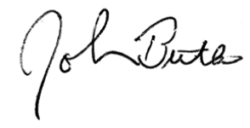- Both tax rises and spending cuts are likely
- The stock market is unlikely to care
- Global developments remain more important
Labour will present their “trick-or-treat” Halloween budget today. Rumours of multiple tax rises and spending cuts have been rife while “public servants” and other selected “cronies” are expected to receive special, exceptional treatment.
Does any of that sound “Soviet” to you? Well, it probably should. “Soviet”, after all, translates roughly as “labour union” from Russian.
That this Labour government is acting in a Soviet way should perhaps not be so shocking after all. And they’re only just getting started…
The prime minister himself has cautioned that it’s “going to be painful.” Wealth redistribution is no longer speculation; it’s a stated goal. And as Health Secretary Wes Sweeting says, “the money simply is not there.”
There will no doubt be “tricks” in the budget, including perhaps a handful of surprising spending cuts. As for the “treats”, if the money simply isn’t there, well… don’t hold your breath.
Even after this budget has come and gone, Labour will continue looking at new ways to slice into your wealth, and inheritance tax will remain a prime target. With death duties already collecting record-breaking billions from families across the UK, the stakes are higher than ever for those looking to protect their assets.
(You can learn how to prepare yourself now, right here, before Labour ramps up their “graverobbing”. Our latest briefing, 8 Legal Ways to Sidestep Inheritance Tax has more details. Find out how to access that report here.)
Regardless of the specifics presented today the budget is unlikely to be a major factor for the stock market, which is global rather than domestic in its orientation. But there is cause for concern coming from overseas too.
I’ve had a defensive bias for the stock market all year. I’ve recommended staying invested to keep up with inflation, but in such a way as to minimise downside risk in case of a correction.
Back in August and September, it appeared the market was in trouble. There was the “mini-crash” in early August. Going into September, so-called “internals” – momentum, sector rotation and the like – were deteriorating. Industrial commodity prices were falling sharply.
Now, here we are, deep into October, in the heart of what I sometimes call the “Witching Season,” and the market is doing fine, particularly in the US. Here is a chart of the FTSE 100 and the US S&P 500 indices:
 Source: Koyfin
Source: Koyfin
The tech-heavy S&P 500 is the more volatile index, as can be seen in the chart. On several occasions over the past year, when it underwent corrections, the FTSE 100 held up much better. But the FTSE 100, even when adjusted for the ~6% rise in the pound vs the dollar this year, has trailed behind. Indeed, it has moved essentially sideways since May.
Industrial commodity prices are no longer declining as they were. Both oil and iron ore prices have risen in recent weeks, implying demand might be firming.
So, are stock markets in the clear? Well, I’m talking my book here, but I don’t think so, for two reasons: US bond yields are rising, as is the price of gold. Gold has continued making new highs as the prior trend of falling bond yields has reversed.
US bond yields rising again
 Source: Koyfin
Source: Koyfin
Why is that important? Because when both bond yields and gold are rising, it is a sign that inflation expectations are picking up. The rise in industrial commodity prices, far from indicating firming demand, might merely be another reflection of rekindling inflationary pressures.
This suggests the stock market remains vulnerable. The entire stock market rally over the past year largely stems from the significant decline in inflation, which allowed central banks to lower interest rates. Absent that, the market would have struggled to rise at all.
As I’ve written before, if the underlying trend in economic data, particularly in the US, were healthier, I wouldn’t maintain such a defensive market bias. However, amidst the backdrop of negative business borrowing, inflation-adjusted industrial production, and declining full-time job growth and total hours worked, I continue to foresee the US slipping into recession, if it hasn’t already.
The rise in inflation expectations in this economic context is indeed a worrying development. Central bankers’ hands could be tied. They won’t find it as easy to lower rates.
To me, the big picture is still one of “stagflation”, even if the shift over the past year has been from “flation” to “stag”. The growth-inflation mix is still poor; that is, not much growth is being generated for a given amount of inflation.
That’s a sign of weak productivity growth, something that we here in the UK know all too well. UK productivity growth has been close to zero for years. To the extent the economy has grown at all, it is simply down to having added more workers to the workforce. Per-capita incomes have thus stagnated too. On an after-tax basis, they have outright declined.
What the UK needs, therefore, is some sort of positive productivity shock, something that would lift the entire economy. But what might that be?
There are a few possibilities on the energy front, one of which is the resurgence of nuclear power.
With nations around the world committing to tripling nuclear production and major players like Microsoft investing in revitalising old plants, the stage is set for a nuclear renaissance.
And the #1 pick in this nuclear reboot?
My colleague, Sam Volkering, reveals it here.
Until next time,

John Butler
Investment Director, Fortune & Freedom




